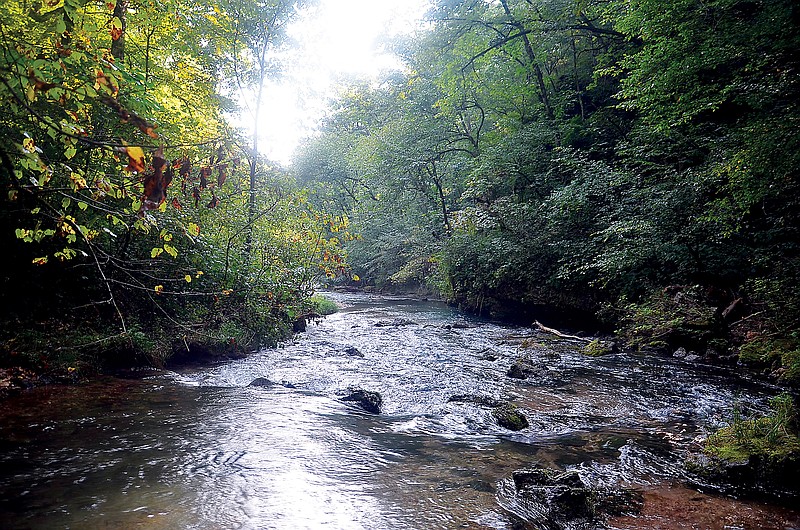The Mark Twain National Forest is comprised of 1.5 million acres spread out across much of southern Missouri.
It stretches through 29 counties. Rolla, Salem and Poplar Bluff are cities near the Mark Twain National Forest. Scattered throughout are small towns like Ava, Bunker, Doniphan, Van Buren and Winona. The forest is far from contiguous. There are multiple large blocks. Only the Cedar Creek section is located north of the Missouri River.
There are more than 750 miles of trails. These include designations for hiking, biking, horseback riding and limited motorized use. All motorized vehicles and mountain bikes require a permit. More than 350 miles of floatable water courses through the Mark Twain National Forest, making this destination well suited for paddling and a little fishing as well.
There are 63,000 acres of dedicated wilderness within the Mark Twain National Forest. The Irish Wilderness is one of the most special public lands in Missouri and is the state’s largest wilderness area. It encompasses 16,277 acres located along the wild and scenic Eleven Point River. There are no motorized vehicles allowed in the wilderness areas, so you can enjoy true solitude, peace and quiet. Wilderness areas remain completely undeveloped. All of the designated wilderness areas are excellent for backcountry camping and offer a special sense of privacy.
The Ozarks are rugged. In Missouri, the ruggedness increases as you head toward Arkansas. There are different topographies in different sections of the Mark Twain.
In the northern reaches, you find rolling hills and more open areas. Cedar thickets among grasslands dot the landscape. Further south, most of the forest is dense hardwoods. This a lot different than most areas of the Midwest. This is big woods with serious elevation changes. You need to understand how to relate to topographical features.
The first step to a successful experience in the Mark Twain National Forest is selecting an area you want to explore. You can’t think of this as a complete 1.5 million acres. You have to select a reasonable sized area and learn it. If you study a few thousand acres, you should be able to identify multiple promising locations. That way, if something happens and one area isn’t panning out, you can move relatively quick and easy to another.
If you don’t have a boat, you can load a backpack with everything you need for a spike camp and spend a few days in a wilderness area. So many Midwestern folks say they someday hope to go out west on a backpack style hiking and camping trip. But right here in the Midwest, they have the opportunity to have the same sort of experience on National Forest land just like they could in Colorado, Wyoming or any other western state. Hiking a few miles each day and camping in the backcountry works just fine for a weekend.
Public land is too often overlooked in the Midwest. Many believe public land is reserved for those unfortunate souls who lack private property. This is a mistake. The truth is, millions of acres of public lands across the Midwest offer endless recreational opportunities, and the 1.5 million acres of Mark Twain National Forest in southern Missouri is a great place to visit.
Whether you use traditional paper maps, or a digital maps like OnX, you need to put some time in locating likely areas based on topography before you hit the ground. The main office for the forest is in Rolla, with satellite offices in numerous smaller towns.
For a complete list of offices where maps are available, or to buy maps online, visit https://www.fs.usda.gov/mtnf.
See you down the trail. …
III
Brandon Butler is an outdoors columnist for the News Tribune. Contact him at [email protected].

